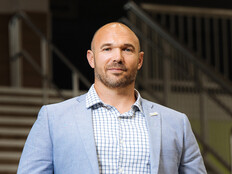New AP Course in Computer Science Principles Aims to Make Tech Accessible
Less than 10 percent of computer scientists are African-Americans and Hispanics, and only 18 percent of women major in computer science, the National Science Foundation reveals.
With statistics like those, it seems likely that most new jobs in computing — the Bureau of Labor Statistics estimates 1.4 million are expected to be created by 2020 — won’t be filled by women or minorities.
The College Board, the not-for-profit organization that administers the SAT exam and Advanced Placement program, wants to change that. Its new AP Computer Science Principles course will examine computing as a creative activity and help students to understand fundamental principles through collaboration. Unlike the existing AP Computer Science A, the College Board reports this program doesn’t require students to bring a passion for technology and a basic knowledge of programming languages — simple curiosity is enough.
AP Computer Science Principles was designed specifically by the College Board and the National Science Foundation to make computing accessible and entice those underrepresented demographics into computer science. The College Board’s own data echoes the deficit in the tech industry: The nonprofit reported that last year, boys who took the AP Computer Science A exam outnumbered girls 4 to 1. A data analysis done by Georgia Tech revealed that 10 states that had fewer than 10 girls take the exam and 23 states that had fewer 10 African-American students take it.
In 2010, Andrew McGettrick, then-chair of the Association for Computer Machinery’s Education Board and Education Council, wrote a letter in support of developing the new course:
There is great need for more students, from diverse backgrounds, to choose computing in order to meet the growing needs of our 21st century economy. Most agree that middle schools and high schools are where we need to focus our attention, in order to share a broad and accurate picture of what computing is, and what one can do with it.
“Rebranding” computer science to demystify it and make it seem less intimidating has achieved success at the university level. In 2014, the San Francisco Chronicle reported that after changing Introduction to Symbolic Programming to The Beauty and Joy of Computing — and adding elements of collaboration — the University of California at Berkeley saw women in that class outnumber men for the first time in a decade.
EdTech: Focus on K–12 recently reported on the Marlborough Public School district outside of Boston, which sought to prepare its students for computing careers by creating a special science, technology, engineering and mathematics (STEM) academy and launching a one-to-one tech initiative that gave each middle and high school student an HP Chromebook. Last year, more than half of the academy’s graduates had at least one “at risk” factor, such as being the first member of their family to attend college. But every student graduated on time, and a staggering 95 percent were accepted into college.
“We take great pride in the fact that we provide these opportunities, especially for our underrepresented kids,” says Daniel Riley, the academy’s director.
AP Computer Science Principles will be offered beginning in fall semester of 2016.









